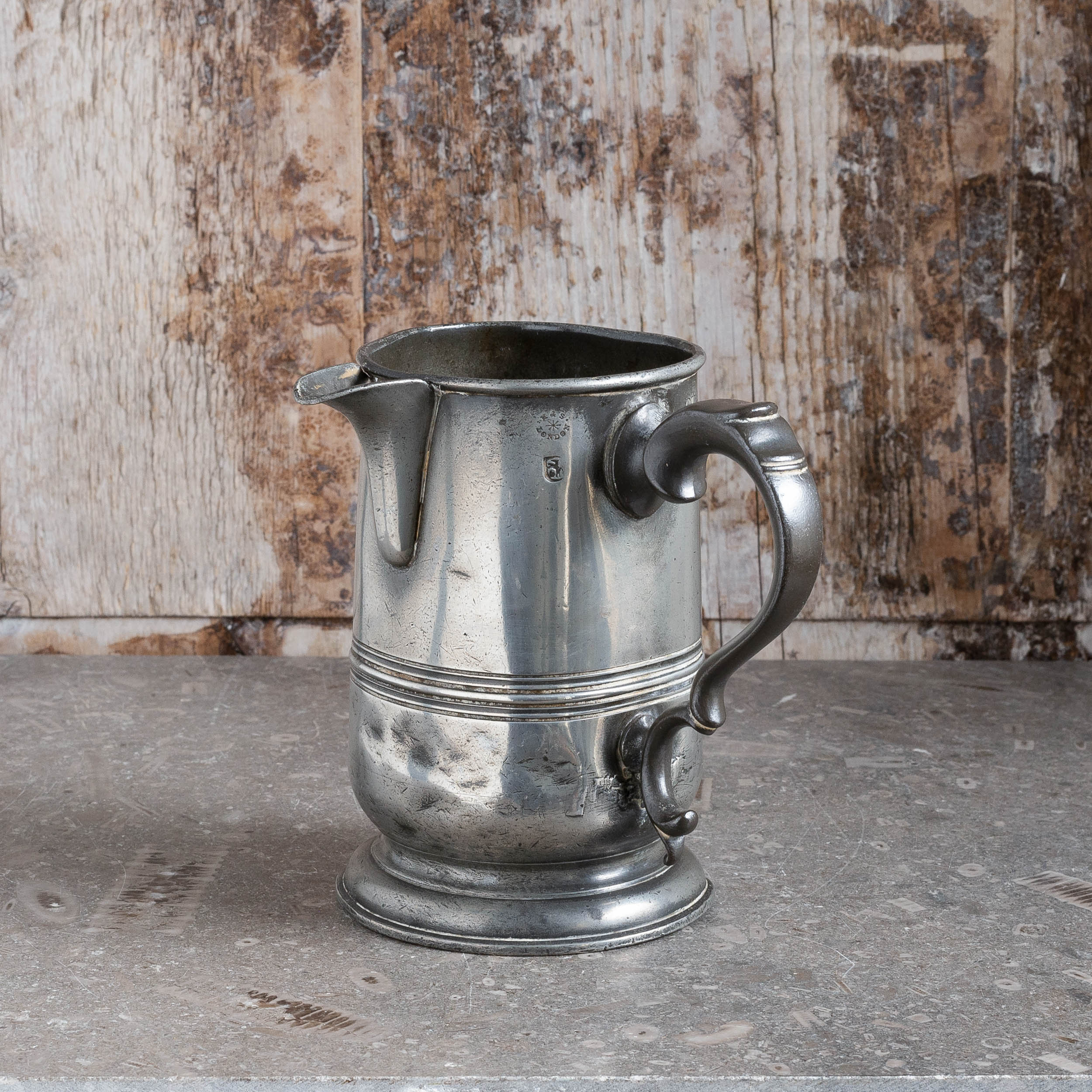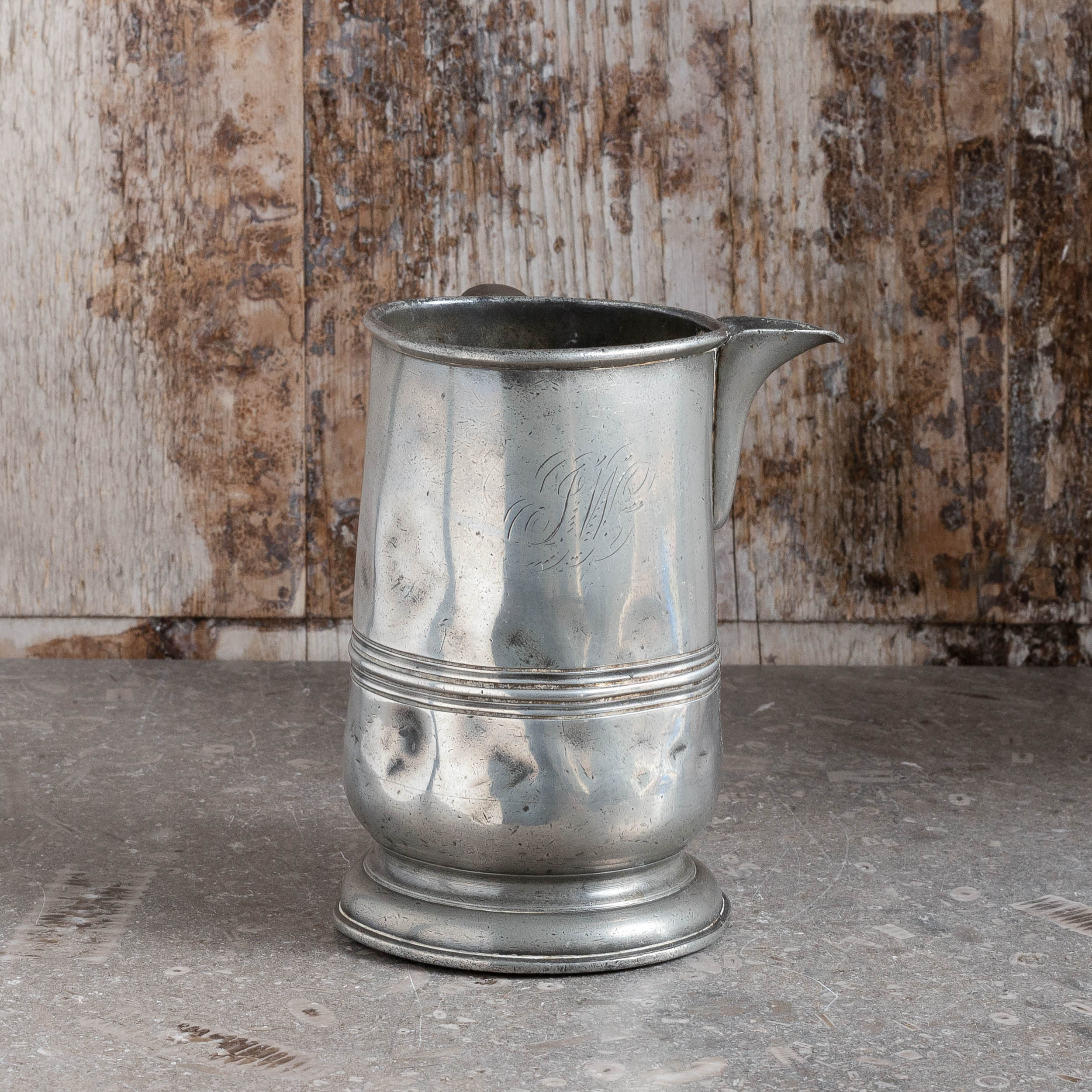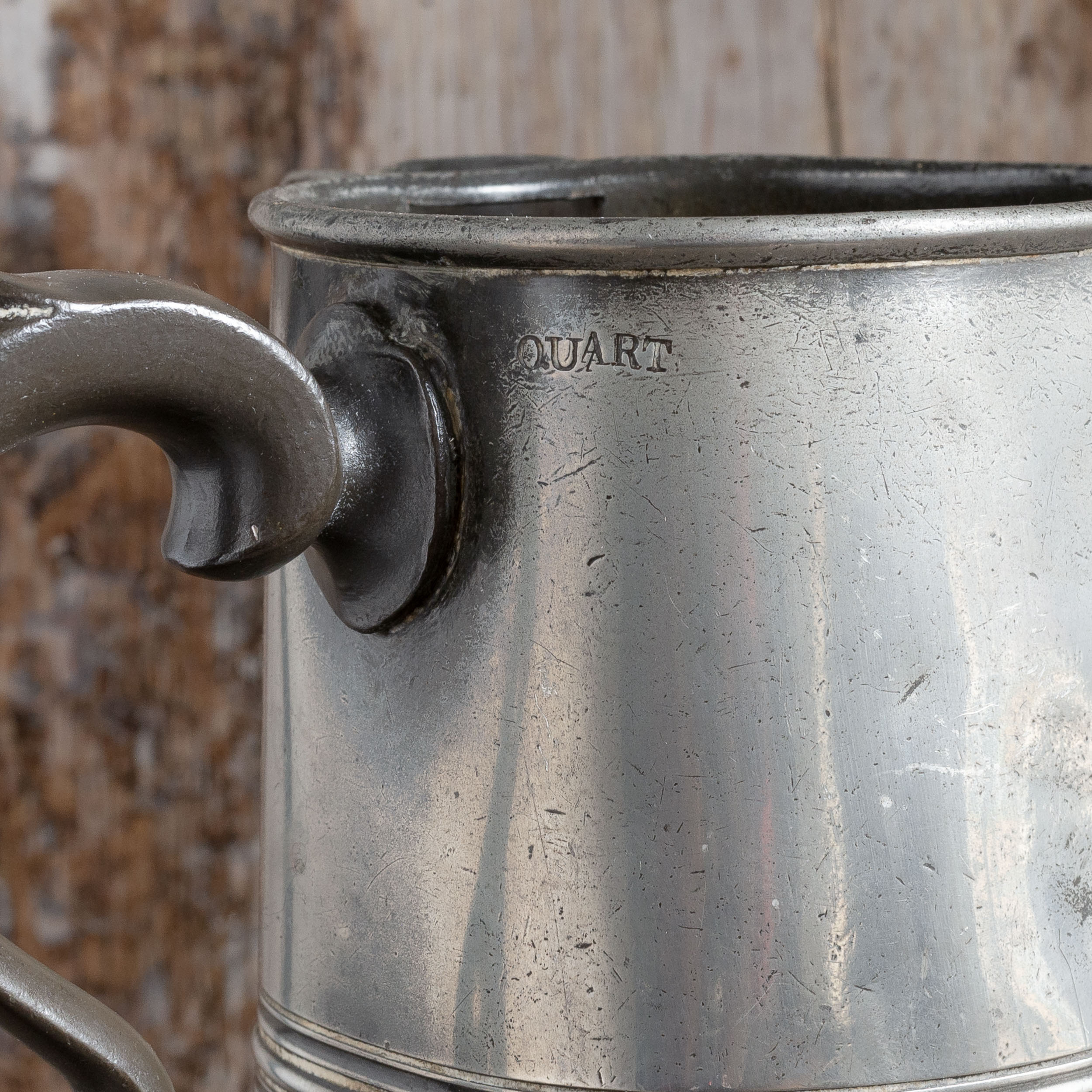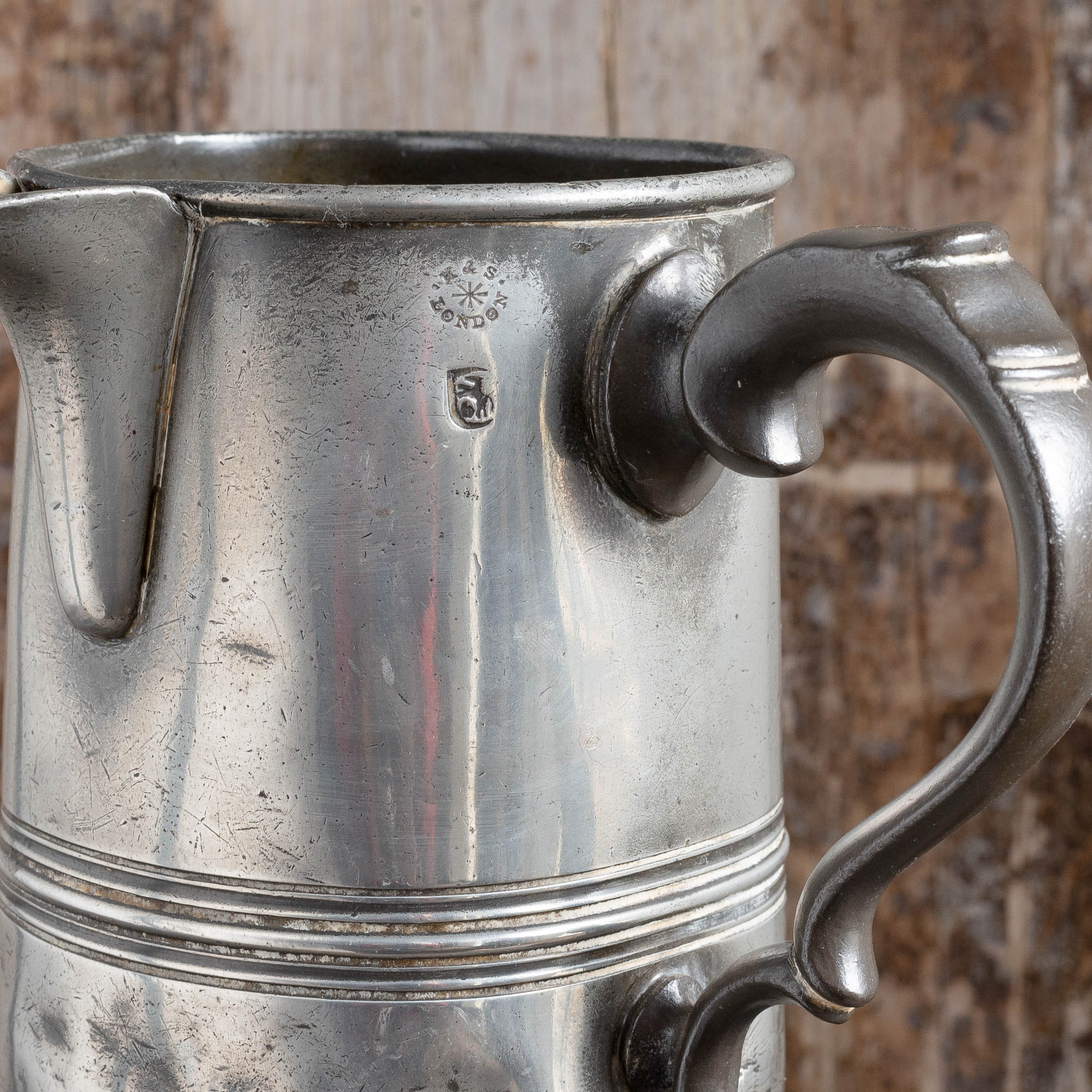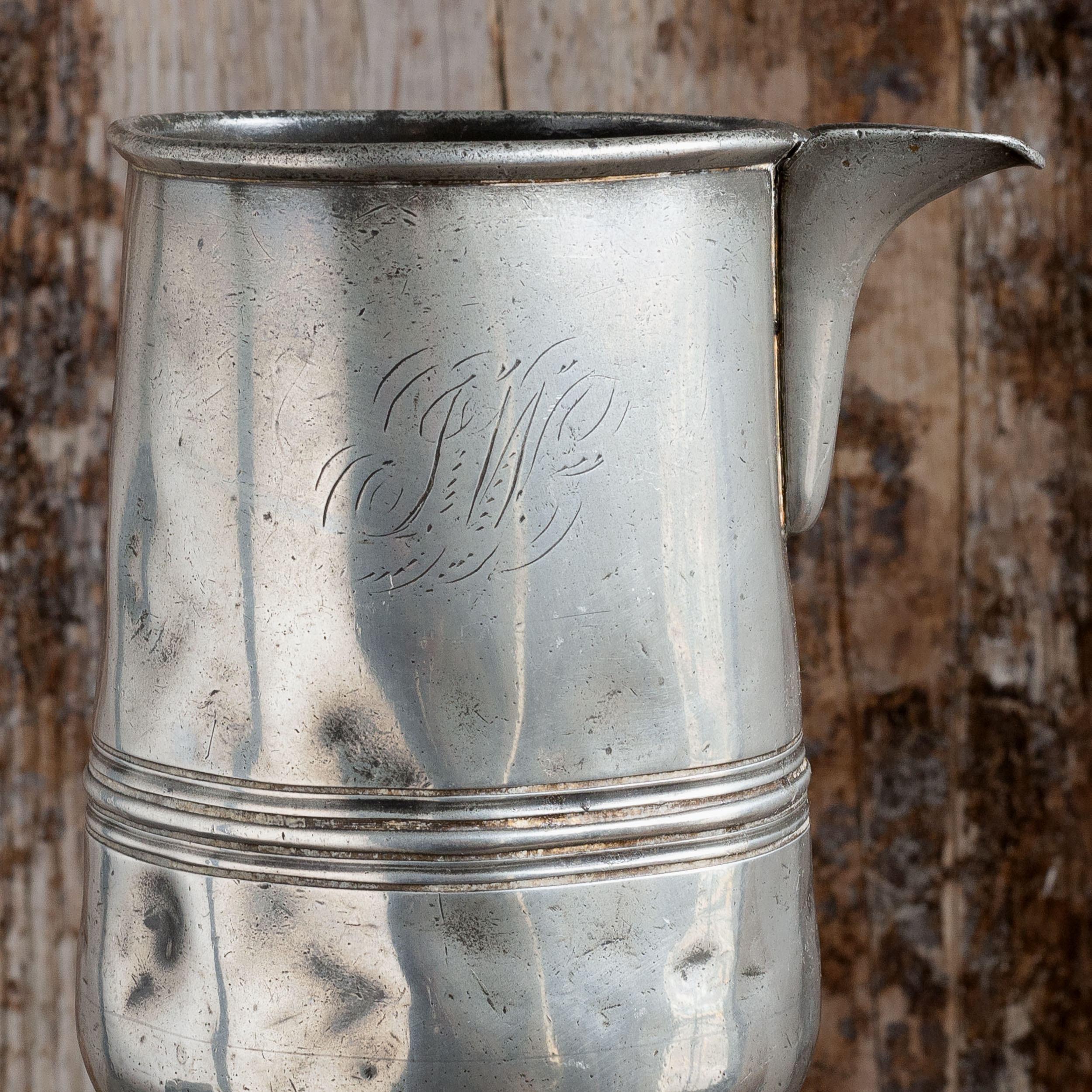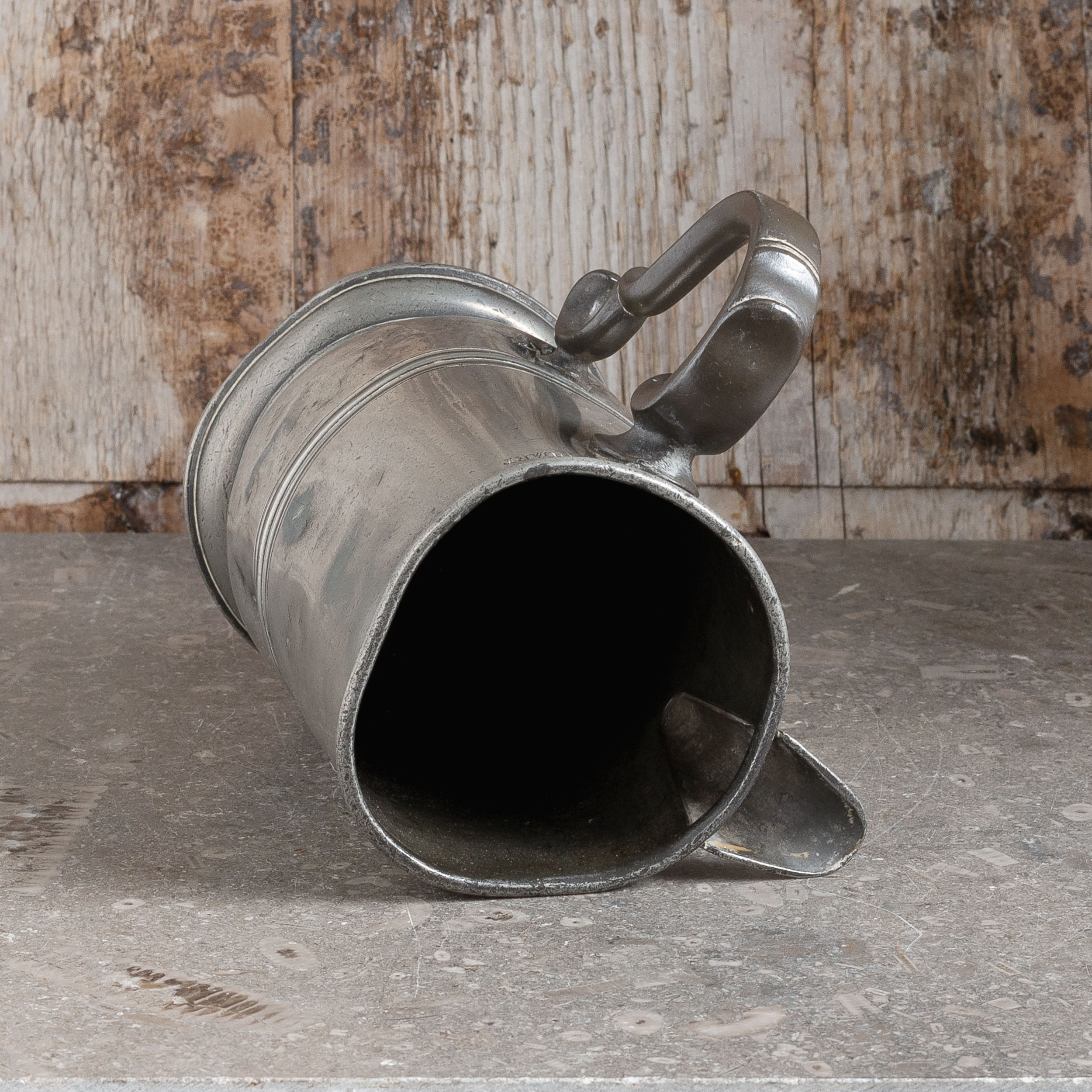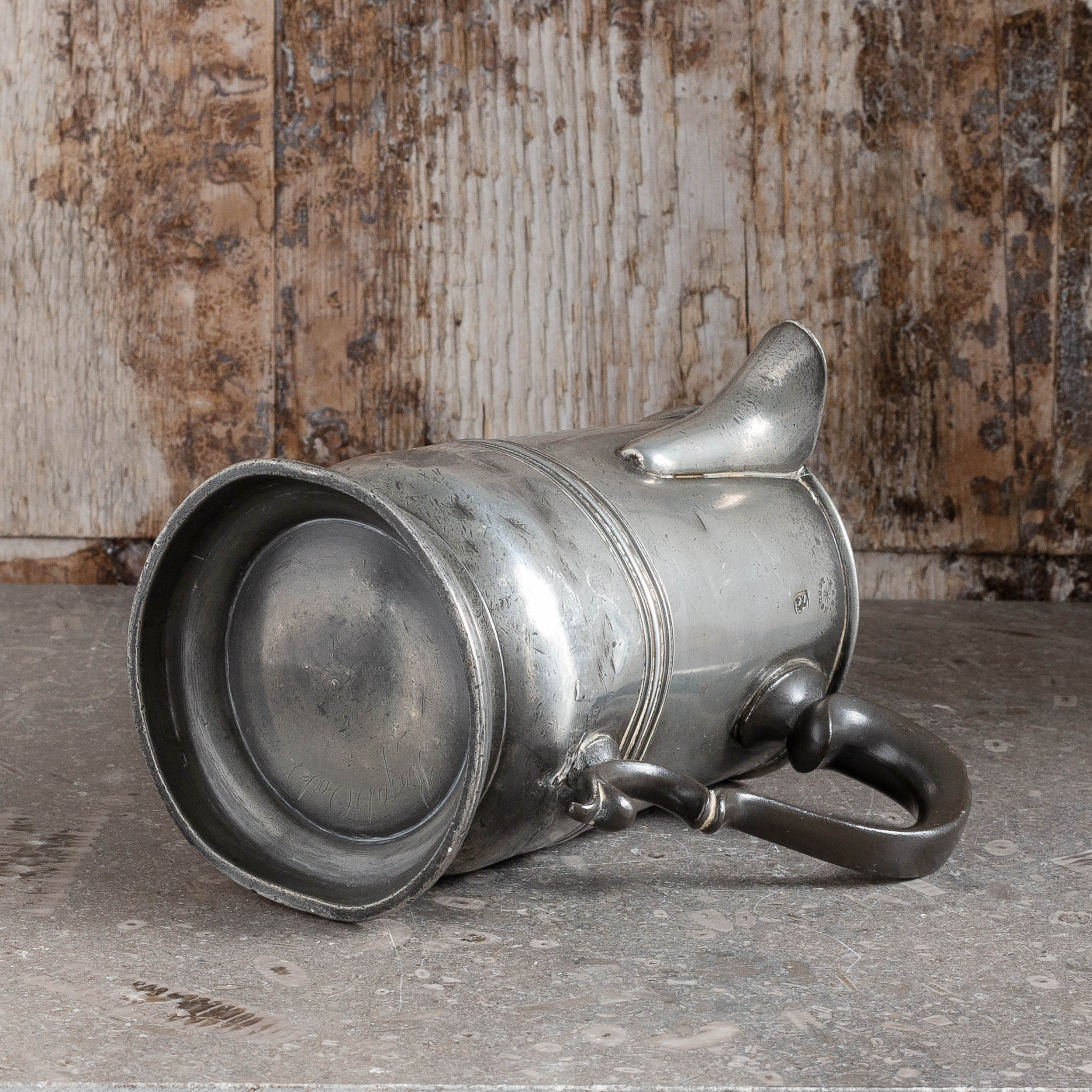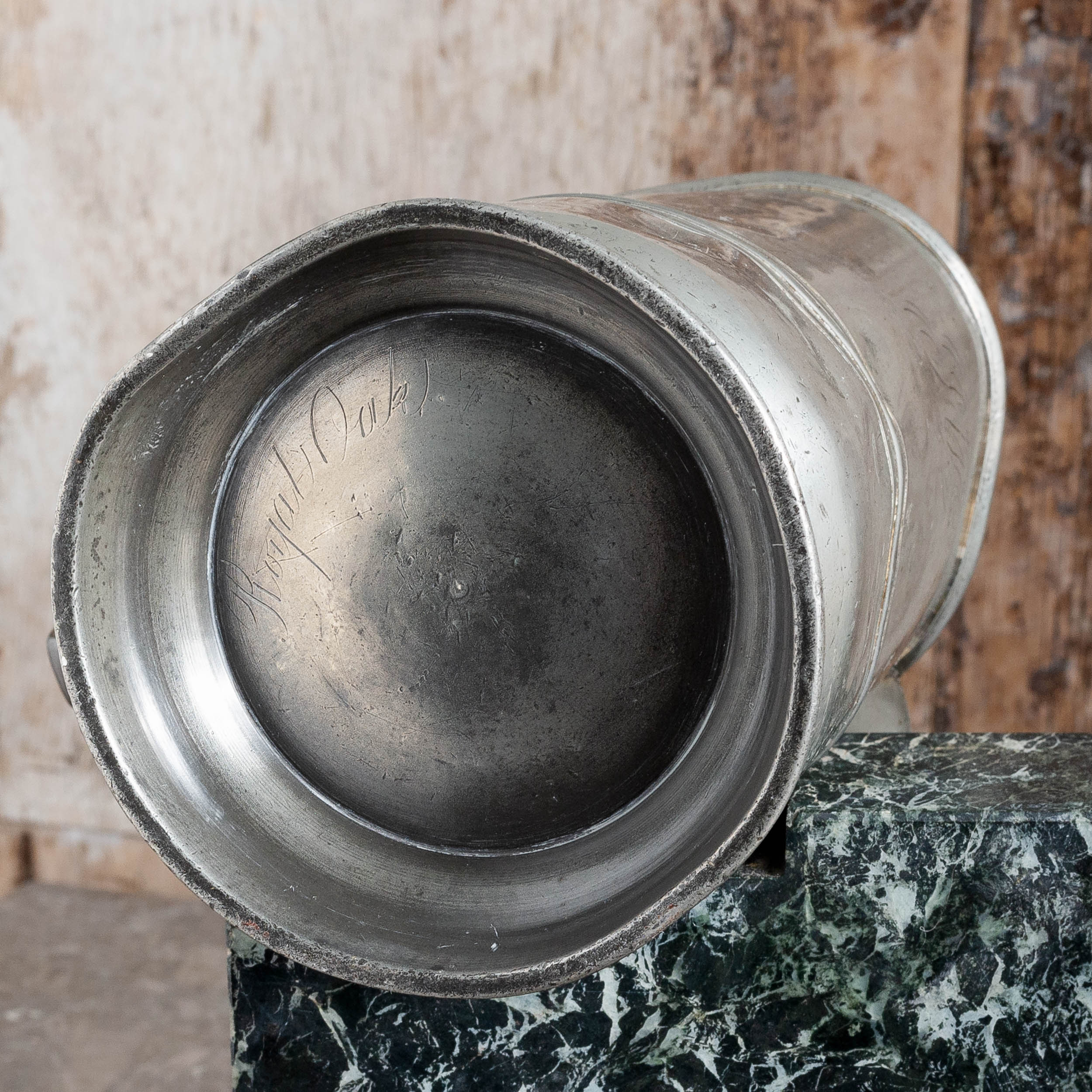Nineteenth Century English Pewter Ale Measure
An early 19th Century Pewter Ale measure with spout. An articulated 'broken' style, double-volute handle with a notched thumb-piece and is set on a tapering 'pear shape' barrell with broad banding and a turned rim, all on a heavy ogee moulded base.
An attractive Petwerers Mark indicates its manufacture in the environs of the City of London, specifically at the firms of Harton & Sons, Pewterers of High Holborn. The retrospective introduction of a 'Capacity Mark', notwithstanding, it likely dates from the mid 1860s.
A hand-cut design on the outward-facing side of the vessell indicates the initials of an historic owner while underneath the name of the Royal Oak public house is extant.
£40
In stock
Until the adoption of mass-produced commercial glassware in the Mid 19th Century the Pewter Mug was the customary vessel in which most people in Britain would take their Ale, Cider or Beer.
Mugs and Tankards were often the private property of individuals and were merely deposited in the ale houses which they regularly frequented.
A Mug, as distinguished from a true Tankard by its open, unlidded top, could come in any of the English customary measurements tanging from a Half Pint up to a full Gallon in capacity.
In a tradition dating back to the earliest Witengamots of the Saxon Kings of England, Mugs, Tankards, Flagons, Cups and liquid measures of all kinds were strictly liable to periodic inspection by His Majesty’s officers. Thus one can see, through the Standard Marks on many such vessels, the development of British Weights and measures down the centuries.
While it is inadvisable to drink from pre-19th Century pewter, the lead content being too high, vessels from after 1770 were manufactured from the new ‘Britannia’ alloy discovered by James Vickers of Sheffield and there are no restrictions on its use for drinking.

